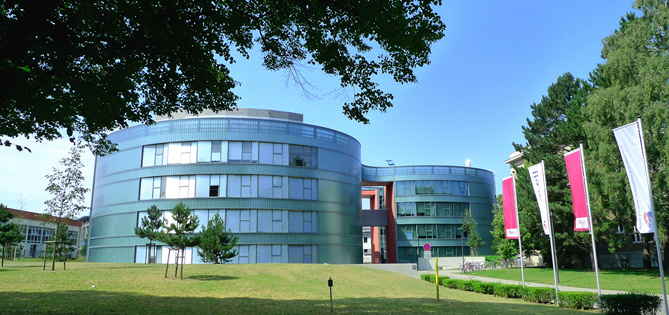Brit J Ophthalmol. 2005; 89: 508-512.
Adenoviral p53 gene transfer inhibits human Tenon´s capsule fibroblast proliferation.
Johnson KTM, Rödicker F, Heise K, Heinz C, Steuhl KP, Pützer BM, Hudde T.
BACKGROUND/AIM:
Although antiproliferative drugs have been used successfully to prevent scarring after filtration surgery in patients with glaucoma, complications associated with their use (such as hypotony or endophthalmitis) energise the search for an alternative treatment. Single application of beta radiation leads to long term growth arrest and expression of p53 in human Tenon's capsule fibroblasts (hTf). The authors assume that the activation of p53 is one of the cellular triggers. Their aim was to analyse the effect of p53 overexpression on hTf and to determine which pathways are involved.
METHODS:
A recombinant adenoviral vector (rAd.p53) containing transgenes encoding for human p53 and green fluorescent protein (GFP) was used to induce overexpression of p53 in hTF and a control vector (rAd.GFP). Transgene expression was detected by western blot (p53 and p21WAF-1/Cip1). Cell proliferation and viability were investigated using cell counts, 5'-bromodeoxyuridine incorporation (BrdU assay) and tetrazolium reduction (MTT assay).
RESULTS:
Infection of hTf with rAd.p53 resulted in significant inhibition of cell proliferation, DNA synthesis, and metabolic activity in vitro. Western blot showed increased levels of p53 and p21WAF-1/Cip1 in rAd.p53 infected cells, but not in rAd.GFP and uninfected cells. Apoptosis was excluded with flow cytometry.
CONCLUSIONS:
Adenoviral p53 gene transfer leads to significant growth inhibition in hTf. P53 induces p21(WAF-1/Cip1) expression and does not cause apoptosis in hTf in vitro. p53 as an antiproliferative drug has the potential to replace mitomycin C and 5-fluorouracil in glaucoma surgery.
Although antiproliferative drugs have been used successfully to prevent scarring after filtration surgery in patients with glaucoma, complications associated with their use (such as hypotony or endophthalmitis) energise the search for an alternative treatment. Single application of beta radiation leads to long term growth arrest and expression of p53 in human Tenon's capsule fibroblasts (hTf). The authors assume that the activation of p53 is one of the cellular triggers. Their aim was to analyse the effect of p53 overexpression on hTf and to determine which pathways are involved.
METHODS:
A recombinant adenoviral vector (rAd.p53) containing transgenes encoding for human p53 and green fluorescent protein (GFP) was used to induce overexpression of p53 in hTF and a control vector (rAd.GFP). Transgene expression was detected by western blot (p53 and p21WAF-1/Cip1). Cell proliferation and viability were investigated using cell counts, 5'-bromodeoxyuridine incorporation (BrdU assay) and tetrazolium reduction (MTT assay).
RESULTS:
Infection of hTf with rAd.p53 resulted in significant inhibition of cell proliferation, DNA synthesis, and metabolic activity in vitro. Western blot showed increased levels of p53 and p21WAF-1/Cip1 in rAd.p53 infected cells, but not in rAd.GFP and uninfected cells. Apoptosis was excluded with flow cytometry.
CONCLUSIONS:
Adenoviral p53 gene transfer leads to significant growth inhibition in hTf. P53 induces p21(WAF-1/Cip1) expression and does not cause apoptosis in hTf in vitro. p53 as an antiproliferative drug has the potential to replace mitomycin C and 5-fluorouracil in glaucoma surgery.

Contact
Institute of Experimental Gene Therapy and Cancer Research
Core-Facility Viral Vector & Genome-Editing Technologies
Biomedical Research Center
Schillingallee 69
D-18057 Rostock
Office
Ingrid Winkler
(+49) 381 494-5066(+49) 381 494-5062
ingrid.winkler@med.uni-rostock.de
Department Life, Light & Matter
Research Building LL&M
Albert-Einstein-Str. 25
D-18059 Rostock
Research Building LL&M
Albert-Einstein-Str. 25
D-18059 Rostock




